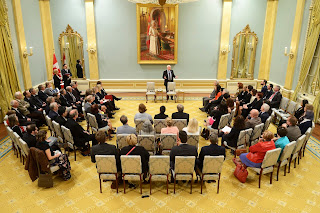You might remember in a previous
post, I was talking about my fascination with electric bikes. I still don't have one, but I did move one step closer today: I rented one. (If you want to skip the long story, scroll to the end for the big UDL moral).
In the name of serious research, I had scoured the internet for information on e-bikes, and realized I could rent one to check out the whole operation.
I got up early on a Saturday (yup,
me), and I drove down to this little shop by Stanley Park that rented e-bikes. The guy at the shop got me out of the door with one in less than five minutes. I didn't really look at it in the shop because my car was parked in a limited time spot. Once out in light of day, the bike did look a little odd. In fact, as I was walking the bike to my car, a guy said to me, "Nice bike." I couldn't tell if he was kidding or not, so I just shrugged and said, "It's a rental."
I wanted to see what the e-bike would do on some serious hills. This particular bike could fold down which I did to fit it in the back of my little car. After a little bit of effort, a few scratches on my car, and a few choice words, I drove off to Spanish Banks. I parked in the lot and took the bike out, and took a quick snap.
That's when I realized this bike looked a lot like the one I had when I was 8, but that one had chopper handle bars, a banana seat, and a hockey card wedged in the spokes. (That's also when I knew the guy on the street was indeed kidding, unless he was also waxing nostalgically on his own bike with streamers on the handlebars). It wasn't really the look I was going for, but in the name of research, I swallowed my manly pride, and hopped on the beast.
Without the electric part on, the bike seemed a little .. precarious. Maybe being a folding bike, I felt that one good bump would turn the bike into a metal and rubber origami project (bike...bump...crane!). And with the handlebars and seat extended to the appropriate height, I kind of looked like one on those circus clowns following the undersized windowless car full of other derelict clowns.
Pedaling was easy along the path along the beach. I cranked up the pedal-assist mode and was flying along. It was cool and weird at the same time in the full pedal-assist, and as long as my feet were in any motion whatsoever, the e-bike went its top speed. I can't tell what the top speed was but it was slower than the cars but faster than the wiener dog who seemed to like me. Level grade testing complete, it was time to tackle the HILL.
If you've ever been to UBC from the Spanish Banks side, you know what hill I'm talking about. It is 2 km of steady uphill. It's not Lombard Street, but the last time I rode up this hill on a bike (21 years ago), it went okay except I coughed up a lung, my deceased grandmother greeted me at the top, and my life flashed before my eyes. Now, a couple decades later with technology on my side (and mortality on my back), I wondered how it would go.
It was SO great! It was quiet on the road, so I pedaled up as if it was on flat ground. I tooled around UBC and coasted down the beautiful neighbourhoods. I went up Tolmie which is closer to Lombard Street, and that's when the battery meter went from 3/4 to 1/4 and the mechanism made a complaining ticking sound. I coasted down again, leaning back so my raised-seat clown perch wouldn't flip me on my face.
I had a little time before I had to return the rental, so I wanted to see if the e-bike would perform differently with the battery at half power. Nope, no difference. In fact, I was following some real athletes on their road bikes (think Lycra, team jerseys, and earned muscle tone). These folks were working it! They were huffing and puffing, their leg muscles were straining, they were grunting and sweating. How do I know all this so well? Because I was merrily pedaling behind them on my clown bike for 8 year-old middle-aged men. The cyclists good-naturedly laughed as I came up behind them on the clown bike, and then they good-naturedly laughed at themselves when I passed them without the strain, without the sweating, without the visits from Grandma (but some of the cycling team I passed may have seen her), and seemingly without the exercise.
Incline test. Check. (Pardon the pun: a passing grade?)
Big UDL Moral
On my previous electric bike post last year, I couldn't really figure out what my e-bike investigation had to do with education. Now I can.
Universal Design for Learning is all about finding modifications for students so everyone has access to learning. If letting kids stand, or use technology, or express their ideas orally instead of writing, helps them be successful or see themselves as learners, e-bikes help me see myself as a cyclist. They remove the obstacles (think hills, think sweating) that keep me from cycling on a regular basis. E-bikes level the playing field for old guys like me, and as I get more fit, I will ease back on the supports as I need them less. I get to explore and expand my cycling horizons, and understand the joys of two-wheels. UDL works the same way for learners and their learning.
After my e-bike experience, I can sum up UDL in one word: Freedom.





